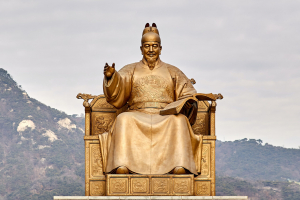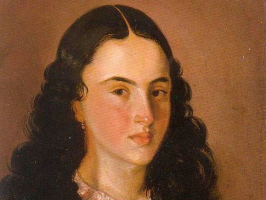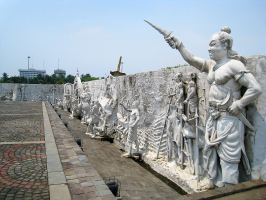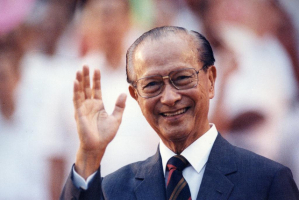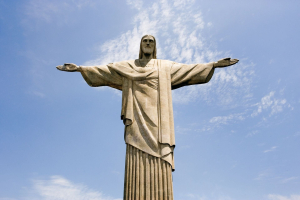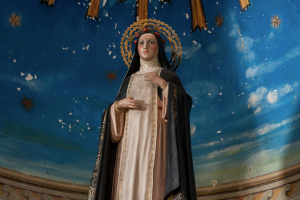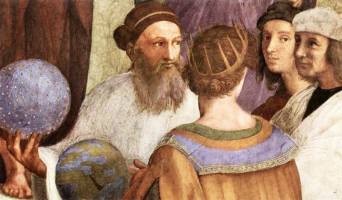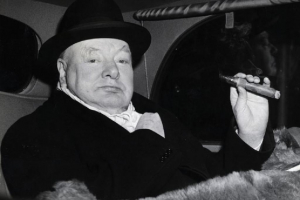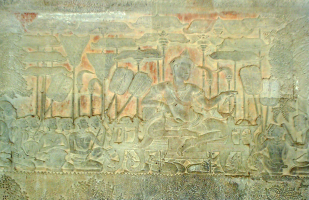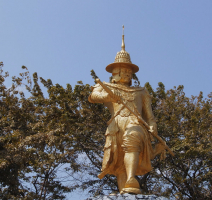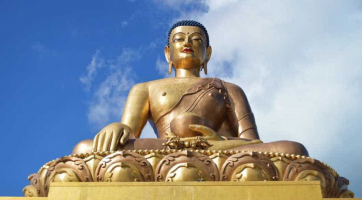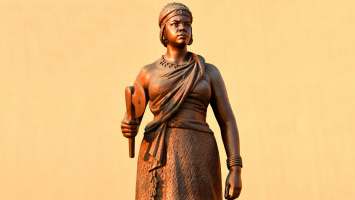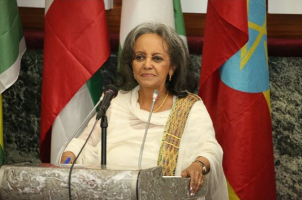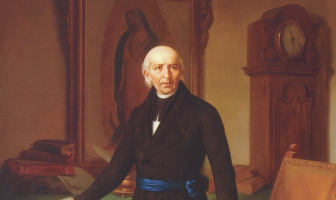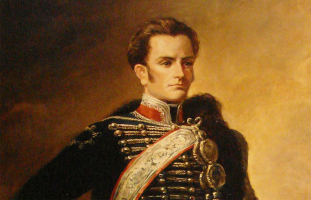Top 7 Most Important Historical Figures In Finland
Finland, formally known as the Republic of Finland, has land borders with Sweden to the northwest, Norway to the north, and Russia to the east, as well as the ... read more...Gulf of Bothnia to the west and the Gulf of Finland to the south, which runs through Estonia. Finland has a population of 5.6 million people and an area of 338,455 square kilometers (130,678 square miles). Finland is a young country, with a history of establishing a new nation beginning in 1917 on the shattered ruins of the tsarist Russian empire. Many of these well-known Finland people can be found throughout history, contributing to the rich tapestry of Finland's history and culture. They play an important role in shaping large currents of thinking and societal change. Here are the most important historical figures in Finland you should know.
-
One of the most important historical figures in Finland is Carl Gustaf Emil Mannerheim. Carl Gustaf Emil Mannerheim (4 June 1867 – 27 January 1951) was a Finnish statesman and military leader. He was the military commander of the Whites during the Finnish Civil War of 1918, Regent of Finland (1918-1919), commander-in-chief of Finland's defensive forces during World War II (1939-1945), Marshal of Finland (1942-), and Finland's sixth president (1944–1946).
Before 1917, the Russian Empire governed the Grand Duchy of Finland, and Mannerheim rose through the ranks of the Imperial Russian Army to the rank of lieutenant general. He played an important role in Emperor Nicholas II's coronation ceremonies in 1896, and he afterward had several private encounters with the Tsar. Following the Bolshevik revolution in Russia in November 1917, Finland declared its independence on 6 December 1917 - but soon became embroiled in the 1918 Finnish Civil War between the pro-Bolshevik "Reds" and the "Whites," who was Senate of Finland troops supported by troops from the German Empire. In January 1918, a Finnish delegation appointed Mannerheim as the Whites' military commander. He was actively involved in the planning of Operation Barbarossa and led the Finnish Defence Forces in the Continuation War, an invasion of the Soviet Union alongside Nazi Germany (1941–1944). When Nazi Germany's defeat in World War II became obvious in 1944, the Finnish Parliament chose Mannerheim as President of Finland, and he oversaw peace negotiations with the Soviet Union and the United Kingdom. He stepped down as President in 1946 and died in 1951.
Mannerheim has long been referred to as the father of modern Finland, owing to his unparalleled role in establishing and later preserving Finland's independence from the Soviet Union, and the New York Times has called Helsinki's Mannerheim Museum memorializing the leader's life and times "the closest thing there is to a national shrine." Mannerheim's personal reputation, on the other hand, continues to divide people to this day, with detractors stressing his involvement as General of the White Guard in the fate of the Red Prisoners during and after the Finnish Civil War. Mannerheim is the only Finn to have held the honorary rank of field marshal, which is awarded to exceptionally brilliant generals.
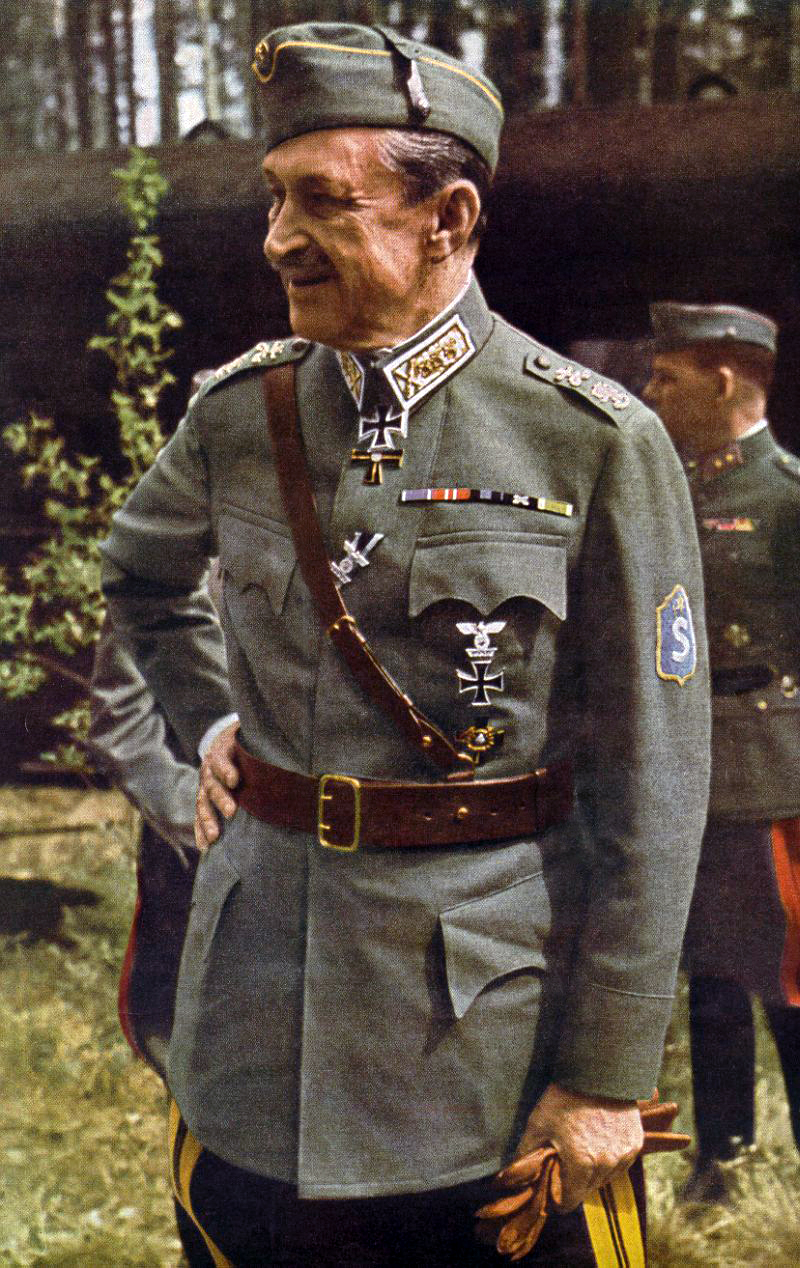
commons.wikimedia.org 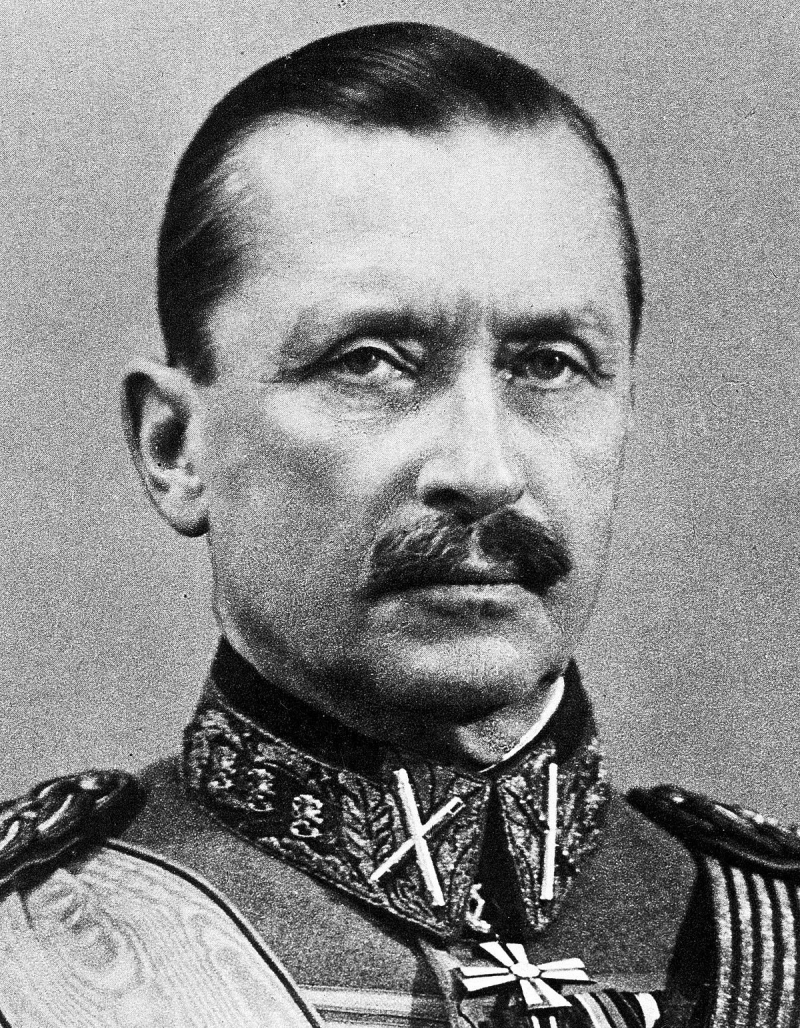
simple.wikipedia.org -
Urho Kaleva Kekkonen (September 3, 1900 – August 31, 1986) was a Finnish politician who served as Finland's eighth and longest-serving president from 1956 to 1982. He was also Prime Minister of Finland (1950-1953, 1954-1956) and held several other cabinet positions. He was the Agrarian League/Centre Party's third and most recent president. He was the head of state for approximately 26 years and dominated Finnish politics for 31 years in total. He held a great deal of power and won his later elections with little opposition, earning him the label of an autocrat. Nonetheless, he is a well-known person.
As president, Kekkonen continued his predecessor President Juho Kusti Paasikivi's "active neutrality" policy, which became known as the Paasikivi-Kekkonen doctrine, under which Finland maintained its independence while maintaining good relations and extensive trade with members of both NATO and the Warsaw Pact. Critical writers derisively referred to this appeasing policy as Finlandization. In 1975, he convened the Conference on Security and Cooperation in Europe in Helsinki and was considered a possible Nobel Peace Prize candidate that year. His diplomatic and trade policies are acknowledged by Finnish historians for allowing Finland's market economy to keep pace with Western Europe, even with the Soviet Union as a neighbor, and enabled Finland to eventually participate in the European integration process. On the other hand, his perceived desire for power, his divide-and-rule approach in domestic politics, and the lack of true political opposition, particularly in the latter part of his presidency, greatly undermined Finnish democracy. Following Kekkonen's administration, his successors started a constitutional reform to expand the power of the Parliament and Prime Minister at the expense of the President.
Before becoming President, Kekkonen served as Foreign Minister (1952-53, 1954), Speaker of the Finnish Parliament (1948-50), Minister of Justice (1936-37, 1944-46, 1951), and Minister of the Interior (1936-37, 1944-46, 1951). (1937–1939, 1950–1951). In addition to his vast political career, he was an athlete in his childhood, a veteran of the Finnish Civil War, and an avid writer who, even during his presidency, wrote amusing, casual articles for the Suomen Kuvalehti magazine under numerous pseudonyms.
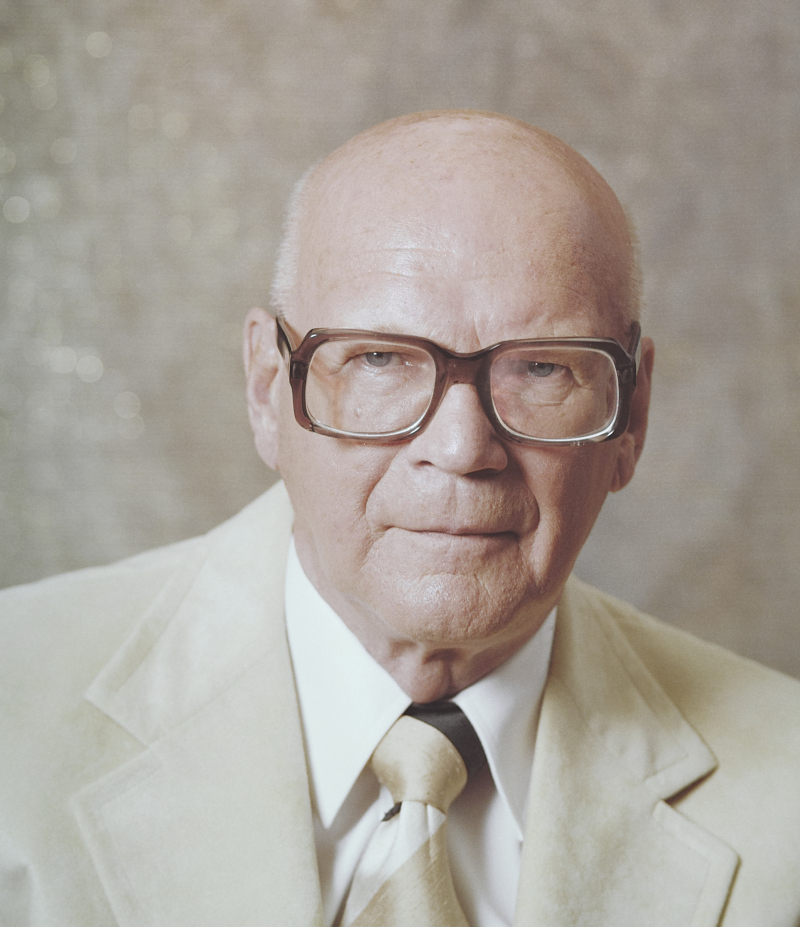
en.wikipedia.org 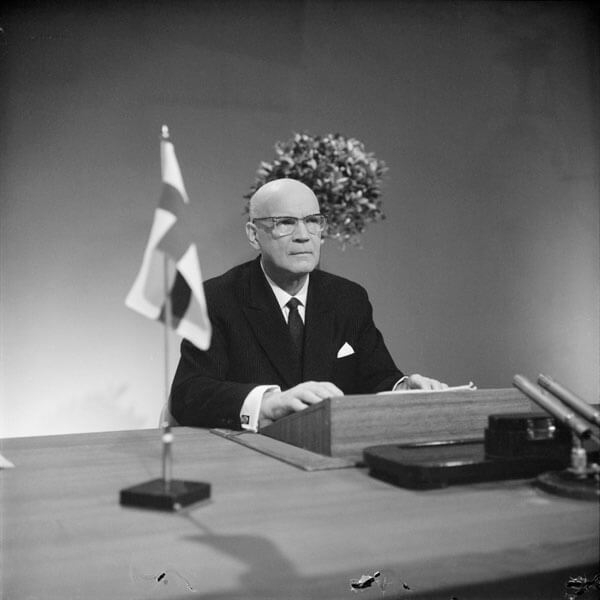
suomenpresidentit.fi -
Minna Canth was a Finnish writer and social activist who was born Ulrika Wilhelmina Johnson on March 19, 1844, and died on May 12, 1897. Canth began writing while managing her family's drapery store and raising seven children as a widow. Her work addressed themes of women's rights, particularly in the context of a dominant culture she saw as hostile to allowing women's goals to be expressed and realized. Her best-known pieces are The Worker's Wife and The Pastor's Family, although Anna Liisa has been made into films and operas the most. She was a controversial person during her time, partly because of the asynchrony between her views and those of the moment, and partly due to her aggressive support for her point of view.
After Aleksis Kivi, Finland's national author and the first Finnish-language newspaperwoman, Minna Canth was the first prominent Finnish-language playwright and prose writer. She was also the first woman in Finland to have her own flag flying day, which began on March 19, 2007. It is also Social Equality Day in Finland.
In Finland, Canth is remembered for its numerous landmarks, publications, medals, commemorative coins, stamps, paintings, plays, exhibitions, and events. Many distinct building sites and locations, according to her, have been named. Canth is also called after a number of cultural clubs and communities. The Minna Canth Prize, which is granted yearly at the Helsinki Book Fair to a "shaker of our society," has been supported by the Finnish Fair Foundation. The winning award is 5,000 euros. Minna Canth monuments have been erected at Kuopio, Tampere, and Jyväskylä, with the Kuopio statue being unveiled on May 12, 1937.
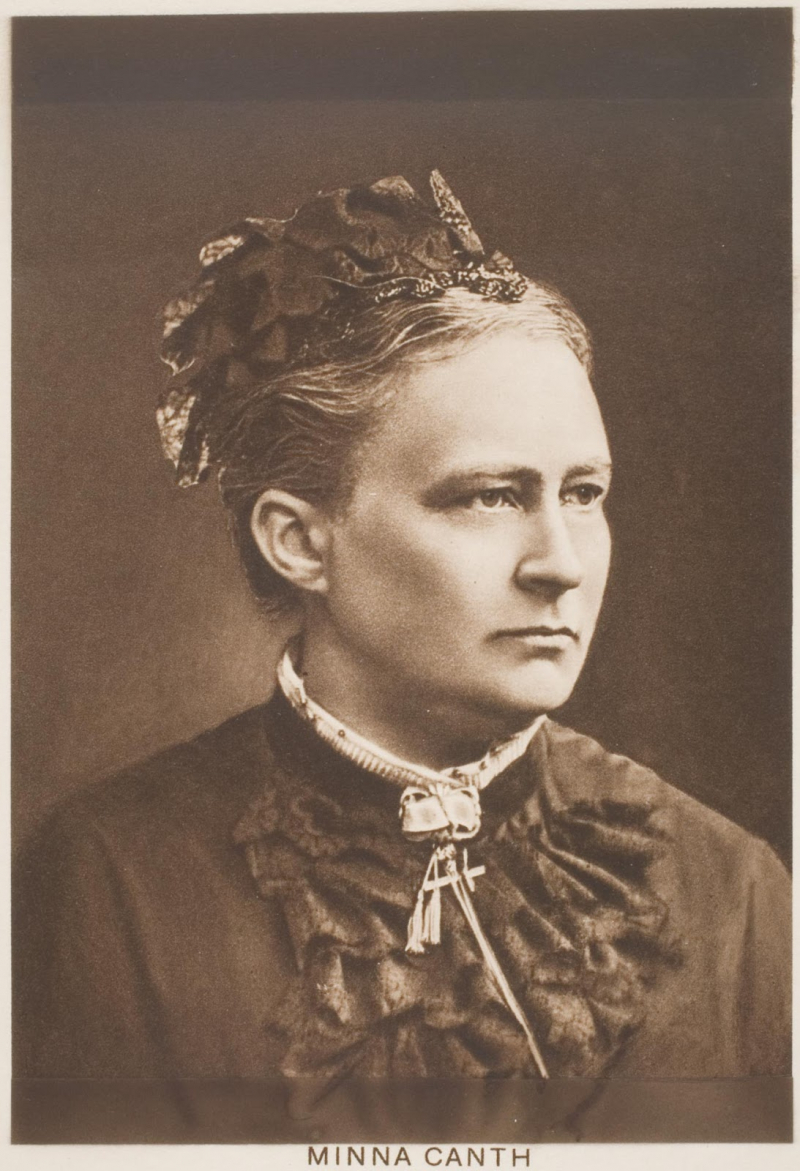
kaisareetta-t.blogspot.com 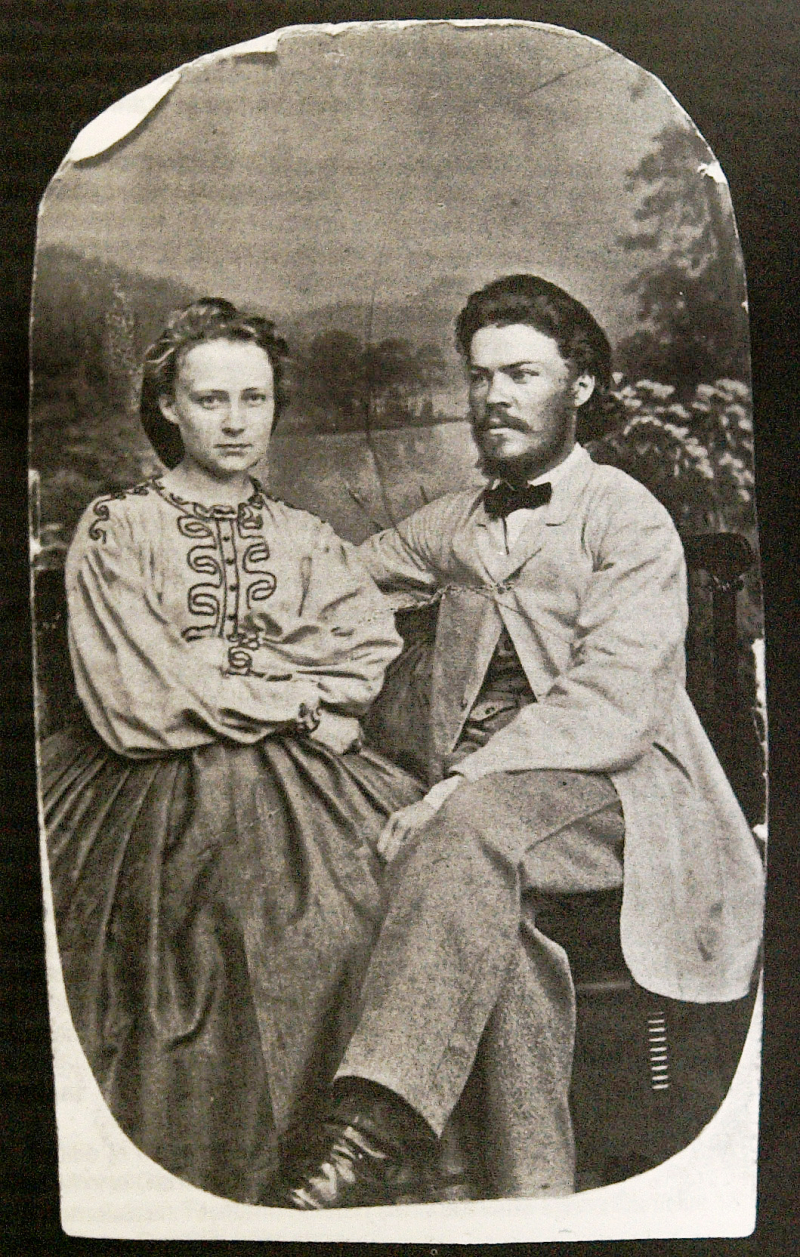
Minna and Johan Ferdinand Canth -en.wikipedia.org -
One of the most important historical figures in Finland is Jean Sibelius. Jean Sibelius (born Johan Julius Christian Sibelius; 8 December 1865 – 20 September 1957) was a late Romantic and early-modern Finnish composer. He is largely considered as his country's best composer, and his music is frequently credited with aiding Finland's development of national identity during its struggle for independence from Russia. His set of seven symphonies, like his other significant works, is regularly played and recorded in Finland and other countries throughout the world. Finlandia, the Karelia Suite, Valse triste, the Violin Concerto, the choral symphony Kullervo, and The Swan of Tuonela are among his other well-known works.
Sibelius was a prolific composer until the mid-1920s, but after finishing his Seventh Symphony (1924), incidental music for The Tempest (1926), and the tone poem Tapiola (1926), he stopped writing major works in his final 30 years. Although he is said to have ceased composing, he sought to continue, including failed attempts at an eighth symphony. Later in life, he composed Masonic music and re-edited some of his earlier pieces, while maintaining an active but not always receptive interest in contemporary musical advances.
Until 2002, when the euro was introduced, the Finnish 100 mark note featured his likeness. Since 2011, Finland has observed a flag-flying day on the composer's birthday, December 8, also known as the Day of Finnish Music. In 2015, to commemorate Sibelius's 150th birthday, a number of special concerts and festivities were held, particularly in Helsinki, Finland's capital.
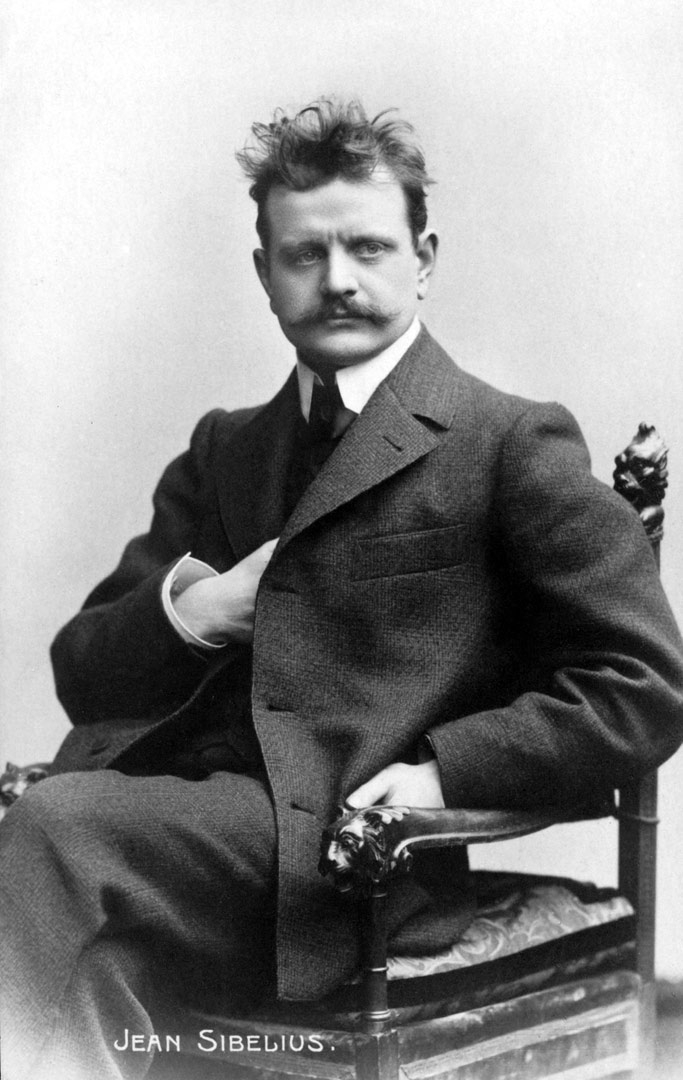
en.wikipedia.org 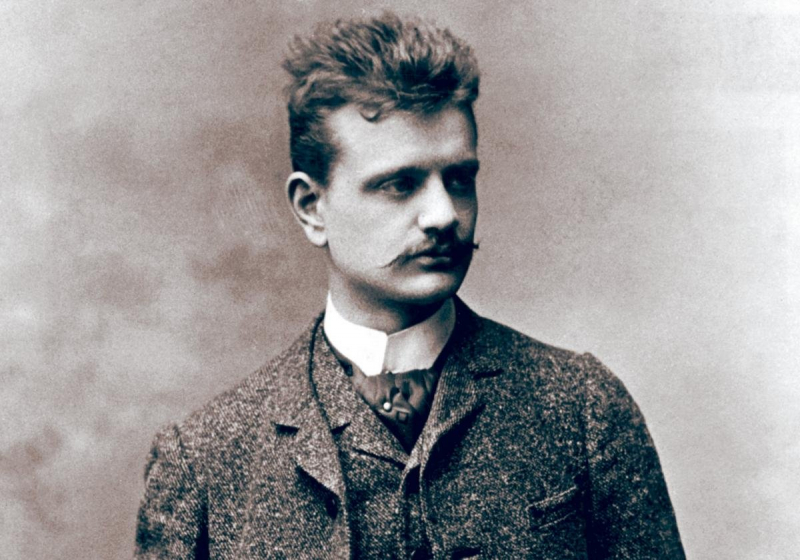
thelistenersclub.com -
Tove Marika Jansson (9 August 1914 – 27 June 2001) was a Finnish author, novelist, painter, illustrator, and comic strip creator who spoke Swedish. Jansson, who was raised by artists, studied art from 1930 to 1938 in Stockholm, Helsinki, and Paris. Her first solo show took place in 1943. She was also producing short tales and articles for publication, as well as designing visuals for book covers and other uses. She worked as an artist and writer for the remainder of her life.
Jansson began writing the Moomin novels for youngsters in 1945, with The Moomins and the Great Flood. Comet in Moominland and Finn Family Moomintroll, released in 1946 and 1948, respectively, were huge sales successes, adding to the success of the original book. In 1966, she was awarded the Hans Christian Andersen Medal for her work as a children's author. The Moomins also inspired a comic strip, which Jansson developed herself, and she was inducted into The Will Eisner Award Hall of Fame in 2016. Jansson wrote six novels, including the acclaimed Sommarboken (The Summer Book), and five books of short tales for adults, beginning with the semi-autobiographical Bildhuggarens dotter (Sculptor's Daughter) in 1968.
Tove Jansson considered her careers as an author and painter to be equally important, despite the fact that she became known first and foremost as an author. She painted throughout her life, shifting from classical impressionism in her teens to a very abstract modernist style in her later years. Jansson exhibited a number of paintings at shows throughout the 1930s and early 1940s, with her first solo exhibition taking place in 1943. Despite largely favorable reviews, Jansson's style was refined to the point where, in her 1955 solo show, her approach was less saturated in terms of detail and content.
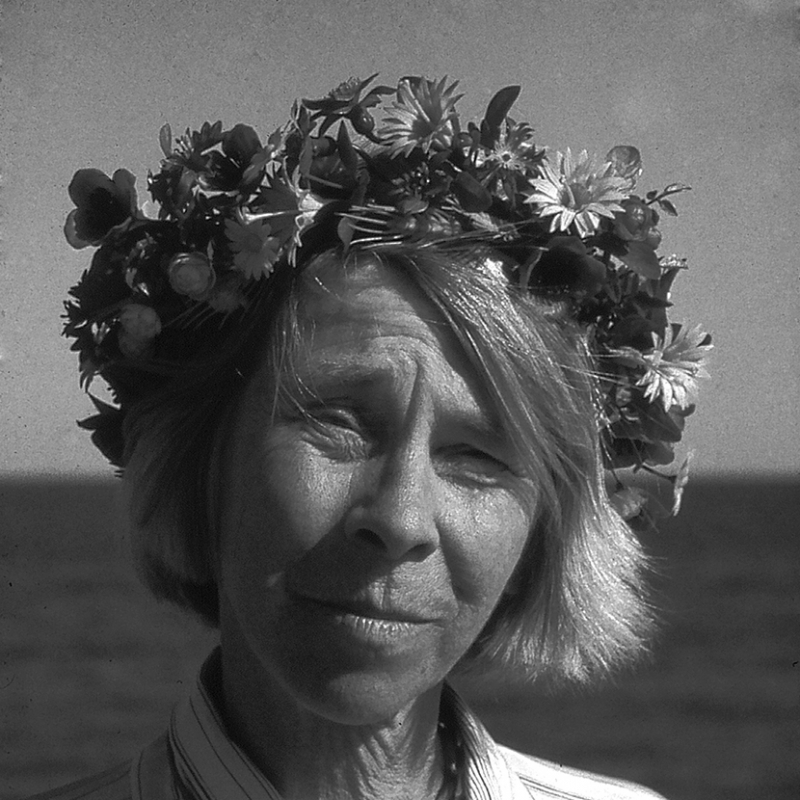
namargini.vbz.hr 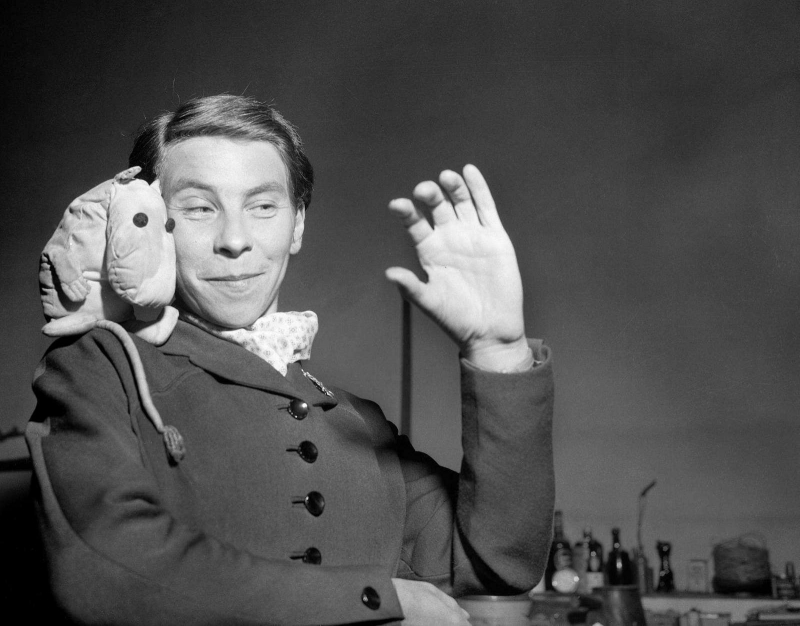
picryl.com -
Johan Ludvig Runeberg was a Finnish priest, lyric and epic poet who died on May 6, 1877. He is called Finland's national poet because he writes completely in his native Swedish. He wrote the lyrics of the unofficial Finnish national song Vrt land (Our Land, Maamme in Finnish). Runeberg also contributed to the modernizing of the Finnish Lutheran hymnal, writing numerous texts for the new edition.
The idealist poetry "Älgskyttarna" (Elk Hunters, 1832) and the epic Kung Fjalar were among Runeberg's most famous works (King Fjalar, 1844). The heroic poem Fänrik Ståls Sägner, composed between 1848 and 1860, is regarded as the best Finnish epic poem outside of the native Kalevala genre, and it incorporates tales of the Finnish War with Russia in 1808-09. During the war, Sweden suffered the humiliation of losing Finland, which became a Grand Duchy in the Russian Empire. The episodic epic highlights the shared humanity of all parties in the struggle while mostly lauding the valor of the Finns. Vårt land (Our Land, Maamme in Finnish) was the first poem to become the Finnish National Anthem.
Runeberg Day is observed every year on February 5, the anniversary of Runeberg's birth. On Esplanadi in the center of Helsinki, there is a statue of Johan Ludwig Runeberg erected by his son Walter Runeberg. Runeberg Township was also named after Runeberg in Becker County, Minnesota. The principal motif of the Finnish commemorative coin is the €10 Johan Ludvig Runeberg, and the Finnish Poetry commemorative coin is Runeberg. It was issued in 2004 to commemorate the 200th anniversary of his birth. The coin's obverse has a stylized representation of Runeberg's visage. Because Runeberg wrote most of his work in Swedish, the reverse shows an 1831 font sample from the Swedish-language daily Helsingfors Tidningar.
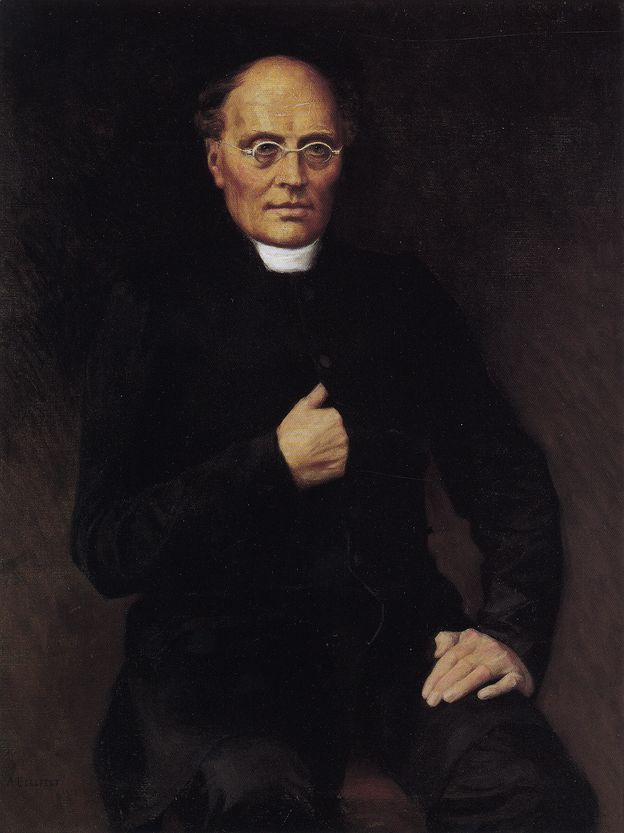
375humanistia.helsinki.fi 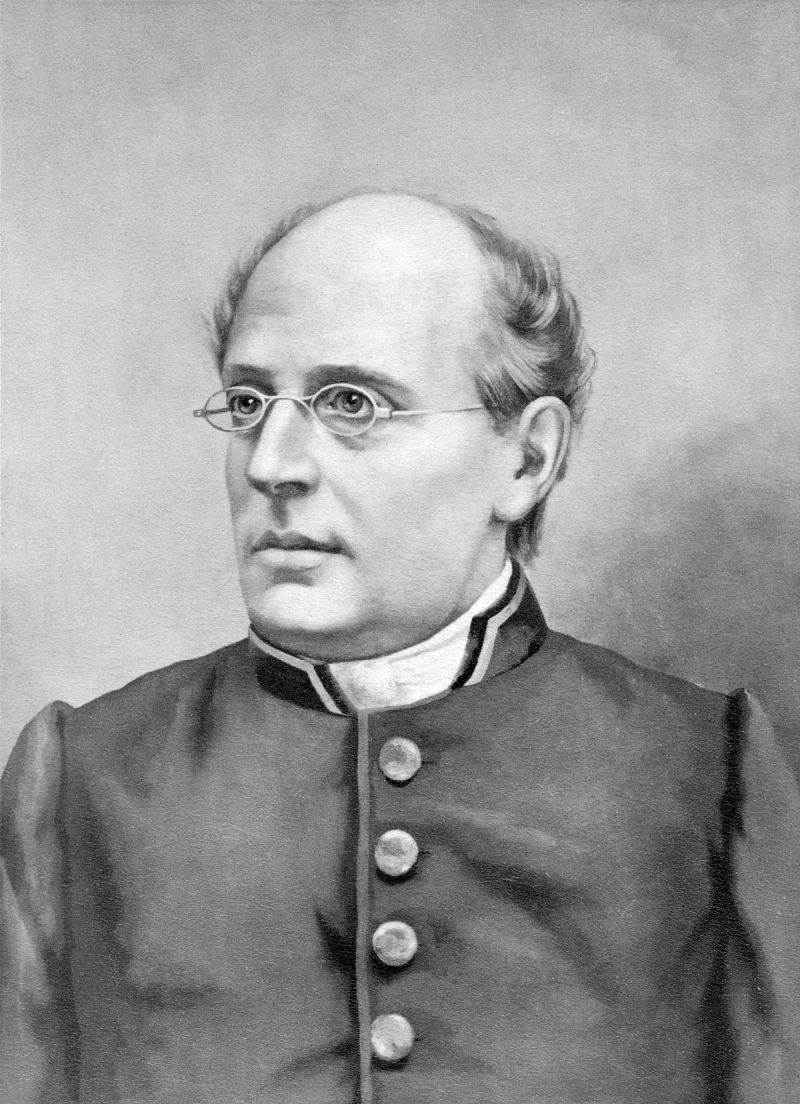
commons.wikimedia.org -
One of the most important historical figures in Finland you should know is Mikael Agricola. Mikael Agricola (c. 1510 – 9 April 1557) was a Finnish Lutheran preacher who was a leading proponent of the Protestant Reformation in Sweden, including Finland, which was a Swedish possession at the time. He is known as the "Father of Literary Finnish."
Agricola was consecrated as bishop of Turku without papal authority in 1554. He maintained the Lutheran reform of the Finnish church (then a member of the Church of Sweden). He translated the Fledgling Testament into Finnish and wrote the prayer book and hymns that were used in Finland's new Lutheran Church. This work established the orthography norms that serve as the foundation for modern Finnish spelling. His meticulous craftsmanship is very impressive.
Agricola led a party on a diplomatic journey to Russia in 1557, and he remained in Moscow from 21 February to 24 March negotiating a peace deal, the Treaty of Novgorod (1557). On April 9, he became unwell and died on the Kyrönniemi peninsula, near the town of Uusikirkko (now Polyane) on the Karelian Isthmus. This is also Elias Lönnrot's birthday, and it is observed throughout Finland as Finnish Language Day. Agricola was most likely buried inside Viipuri's church, but the precise location of his grave is unknown.
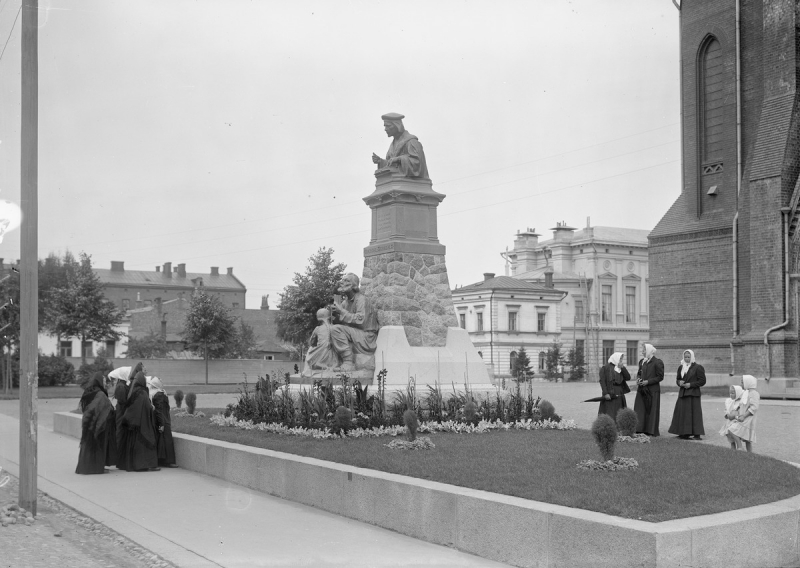
The original statue of Mikael Agricola in Vyborg by Emil Wikström -en.wikipedia.org 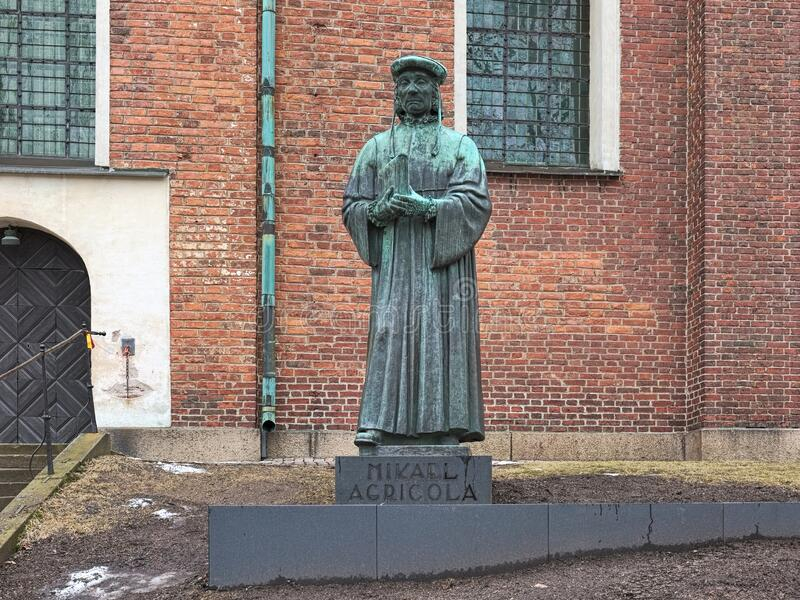
pt.dreamstime.com











